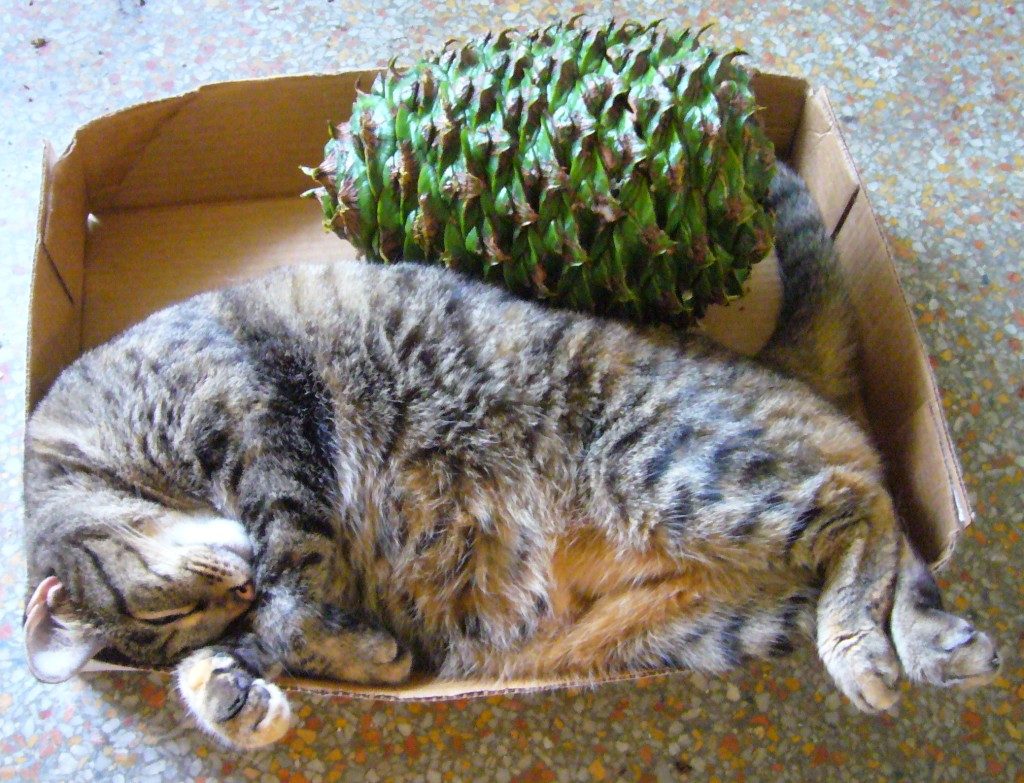
Couscous cuddling up to a Bunya Bunya cone. Photo by Green Deane
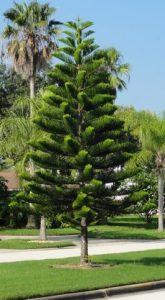
Norfolk Island Pine has edible seeds.
Bunya Bunya get no respect in countries where people have plenty of food. The falling large cones — about this time of year — are consider a legal hazard and the trees are often cut down (as they were at the entrance to Bok Tower in Lake Wales. That plant preserve is the last place one would think they would be removed.) The bigger the cone the more likely it will have kernels in the shells. It is a bit of work to get the enclosed nuts out of their green husks. As the kernel taste more like chestnuts than pine nuts I prefer to roast them. This also makes the outer shell more brittle and easier to crack. You can read more about the Bunya-Buya here. A reasonably close relative with edible seeds is the Norfolk Island Pine. They used to be standard landscaping fare and are far more common. Also called the Norfolk Pine, the species is common in warm, humid coastal areas because the species is quite salt tolerant (though there is one down the street from me in the middle of the state.) At one time the greater family included a huge amount of species ranging over much of the earth. Botanists tell us that most of them died out along with the dinosaurs leaving just a few species ranging from South America to Australia. While in its native habitat the Norfolk Pine can reach 150 feet high and 10 feet through in North America it is often a house or office plant popular because it somewhat resembles a stringy Christmas tree.
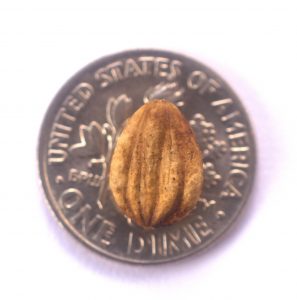
Black Gum seeds are easy to identify. Photo by Green Deane
Do you know why the Sweet Gum tree is called that? Because while it tastes mighty bad it is not as bad as the other “gum” trees, one of which, the Black Gum, is not yet in season but is fruiting. You have to like sour and bitter to like the Black Gum tree. You also have to wade about in wet spots as the tree likes to be damp. The fruit is offensive (you hae been warned) and elicits comments that cannot be printed in wholesome publications. This did not stop settlers, however, from adding a lot of sugar to the fruit and making jelly out of it. The seed itself is easy to identify in that under the pulp as it has vertical striations. The tree usually looks gangly and has branches that are often at a 90-degree angle to the trunk. To read more about the Black Gum and its nearly-offensive but edible relatives click here.
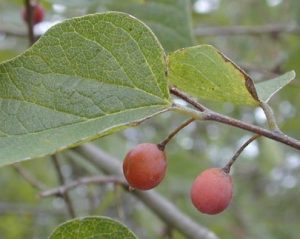
Hackberries, or sugarberries, are usually burnt orange in color.
There is a tree you should be scouting for now so when the fruit ripens next month you’ll have some already located. As in real estate so in foraging: Location, location, location. Hackberries (also widely know as Sugarberries) like to be near but not in fresh water. You can often find them about 10 feet above the local water table but I’ve seen them as low as three feet. Usually you can find them up the bank from the water. Older Hackberry bark will often be warty, sometimes heavily so. Leaves have uneven shoulders, and on the back side of the leaf notice three prominent veins at the base, unusual for tree leaves. The small-pea sized fruit is green this time of year but will ripen to a burnt orange. The entire fruit is edible though the seed is hard. To read more about them go here.
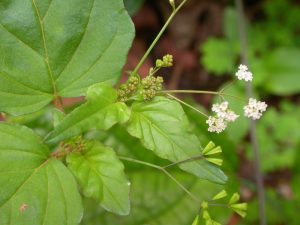
Boerhavia erecta
Foraging is like treasure hunting. While pedaling along a bike trail I had to stop at an intersection and noticed some Boerhavia diffusa. It’s a common marginal edible probably from India or somewhere near there. One usually finds it in somewhat trashy ground such as sidewalk cracks, parking lots, and dumps. So when I stopped at the intersection it was no surprise to see Boerhavia growing there. But growing next to it was a white Boerhavia, B. erecta. The leaves are more pointed than the common species and it’s a Florida native. B. erecta, the “Erect Spiderling” or “Erect Boerhavia” has spread to other parts of the world and is reportedly edible and medicinal like B. difussa. You can read about the ruby-blossomed B. diffusa here.

Green Deane Forum
Want to identify a plant? Need to identify a plant? Looking for a foraging reference? Maybe you have a UFO, an Unidentified Flowering Object, you want identified. On the Green Deane Forum we — including Green Deane — chat about foraging all year. And it’s not just about warm-weather plants or just North American flora. Many nations share common weeds so there’s a lot to talk about. There’s also more than weeds. The reference section has information for foraging around the world. There are articles on food preservation, and forgotten skills from making bows to fermenting food. Topics have included: Tea, Salt and Amla, Small Bush and Flower, Ragweed? Pine Cough Drops and Needles, Odd Vine? Hunting and Trapping Ethics. Knife Accidents. Some Kind of Lespendeza and Survival Garden. You can join the forum by clicking on the button in the menu line.

135 videos
All of Green Deane’s videos available for free on You Tube. They do have ads on them so every time you watch a Green Deane video I get a quarter of one cent. Four views, one cent. Not exactly a large money-maker but it helps pays for this newsletter. If you want to see the videos without ads and some in slightly better quality you can order the DVD set. It is nine DVDs with 15 videos on each. Many people want their own copy of the videos or they have a slow service and its easier to order then to watch them on-line. They make a good gift for that forager you know. Individual DVDs can also be ordered. You can order them by clicking on the button on the top right of this page or you can go here.
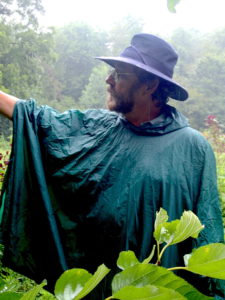
Classes are held rain or shine (or fog when in the mountains.)
Saturday, August 18th, Wekiva State Park, 1800 Wekiwa Circle, Apopka, Florida 32712. 9 a.m. Besides cost of the class there is a park admission Fee: $6 per vehicle. $4 for a single occupant vehicle, $2 pedestrians or bicyclists. Meet at the Sand Lake parking lot (after you pay pass the parking lot on your left then turn left at the Y. Go to the end. This is a rustic walk, no water, no bathrooms, and a hot time of year. The class is three hours or less.) I recommend you arrive early as the park fills with bathers.
Sunday August 19th, Eagle Park Lake, 1800 Keene Road, Largo, FL33771. 9 a.m. Meet at the pavilion near the dog park.
Monday, August 27th, 1624 Taylor Road, Honea Path, South Carolina, 10 a.m., rain or shine (except hurricanes.) All of Green Deane’s classes are hands on, walking outside. Wild edible plants, medicinals and perhaps a mushroom or two will be on the agenda (as Green Deane is in the Carolinas that week studying local mushrooms.) Donations to Putney Farm are appreciated as they are hosting the event. For more information you can contact Putney Farm on Facebook or Green Deane at GreenDeane@gmail.com.
Saturday, September 1st, Jervey Gantt Recreation Complex, 2390 SE 36th Ave., Ocala, FL, 34471. Meet at the entrance to the pool, aka Aquatic Fun Center. 9 a.m.
Sunday, September 2nd, Red Bug Slough Preserve, 5200 Beneva Road, Sarasota, FL, 34233. 9 a.m.
Saturday, September 8th, Blanchard Park, 10501 Jay Blanchard Trail, Orlando, FL 32817. 9 a.m. Meet at the pavilion east of the tennis courts near the YMCA.
For more information about classes or to pay go here.
 Donations to upgrade EatTheWeeds.com and fund a book have gone well and made it past the half way mark. Thank you to all (Peggy last week) who have contributed to either via the Go Fund Me link, the PayPal donation link or by writing to Green Deane POB 941793 Maitland FL, 32794. The Forum needs work and several function problems need to be fixed specifically the search and categories ( a partial solution is that when you do a search other finds are directly below the main one shown. Scroll down.) A continuing problem is finding an indexing program or function for a real book. Writing programs used to do it automatically if you designated a term for indexing. Now that most books are ebooks most writing programs do not provide and indexing function. The hunt continues.
Donations to upgrade EatTheWeeds.com and fund a book have gone well and made it past the half way mark. Thank you to all (Peggy last week) who have contributed to either via the Go Fund Me link, the PayPal donation link or by writing to Green Deane POB 941793 Maitland FL, 32794. The Forum needs work and several function problems need to be fixed specifically the search and categories ( a partial solution is that when you do a search other finds are directly below the main one shown. Scroll down.) A continuing problem is finding an indexing program or function for a real book. Writing programs used to do it automatically if you designated a term for indexing. Now that most books are ebooks most writing programs do not provide and indexing function. The hunt continues.
This is weekly issue 317. There will be no newsletter August 28, 2018. I will be in the Carolinas studying mushrooms.
If you would like to donate to Eat The Weeds please click here. Or you can use my Go Fund Me link, or by writing to Green Deane POB 941793 Maitland FL, 32794.


Hi Deane! Don’t forget to tell people that there is plenty of good foraging while traveling to your vacation place (s). Found a great patch of wild elderberries in Methuen, MA ! You never know what you will find out there!